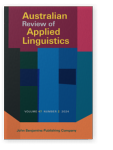Vol. 47:2 (2024) ► pp.153–173
Receptive vocabulary size estimates for general and academic vocabulary at a multi-campus Australian university
There are few published estimates of vocabulary sizes amongst students in tertiary education. Research does not offer estimates of the vocabulary size tertiary students might be expected to possess, though estimates exist for K-12 education, some EFL contexts, and the general population. Such research is important. For reading comprehension during tertiary education, a vocabulary of minimally 10,000 words is recommended, along with proficiency in academic vocabulary. A recent study of three universities in the United Kingdom concluded pedagogical intervention was required, since estimates indicated undergraduates knew fewer than 10,000 words. A subsequent study of a New Zealand university found students knew 16,000 words and pedagogical intervention was not required. The current study investigates 433 tertiary students at an Australian university to determine if students required vocabulary support. It contributes to a research record allowing for comparisons internationally, nationally, and over time. Methods employed included the Vocabulary Size Test/VST and Academic Vocabulary Test/AVT. Results indicate an average vocabulary size of 16,117 words, with academic vocabulary well-known.
Article outline
- 1.Introduction
- 2.Current estimates of vocabulary sizes in different educational contexts
- 3.Academic vocabulary knowledge
- 4.The present study
- 5.Methodology
- 6.Results
- 7.Discussion
- 8.Limitations and future research
- 9.Conclusion
-
References
